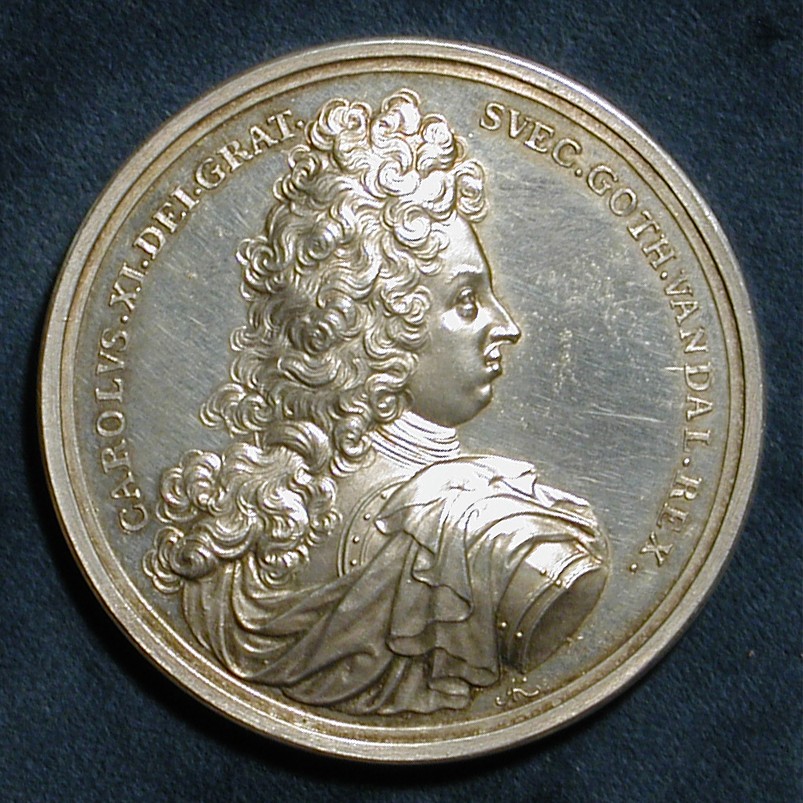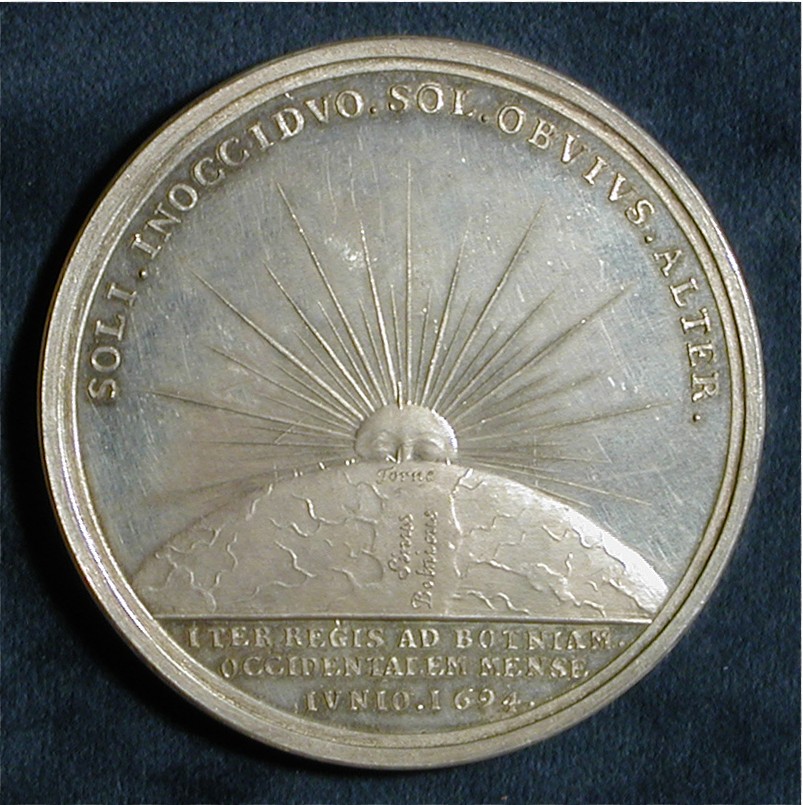

|
CHARLES XI OF SWEDEN, VISIT TO VÄSTERBOTTEN KARLSTEEN, Arvid: Sweden, 1694, Silver,
63 mm Exergue: ITER REGIS AD BOTNIAN. OCCIDENTALEM MENSE IVNIO. 1694. (The journey of the king to Botnian, coming from the west in the month of June 1694). Signed: AK (in script) Ref: Hild 123; Weiss BW786 Charles XI (1655-1697), King of Sweden (1660-1697) was the son and successor of Charles X. He reached his majority and was coronated in 1672 at the age of 17, the country having being ruled by a council of regency until then. Even after he reached his majority, the council exerted great influence on foreign policy, leading the country into the Dutch Wars. Charles ruled Sweden during part of the period in Swedish history known as the Swedish empire (1611–1718), the earlier part having been ruled by King Gustavus II Adolphus. It was during this latter time (1672-1678) that Sweden was involved in the Dutch Wars where Frederick William of Brandenburg gained Swedish Pomerania. A succession of Swedish victories led to the Peace of Lund. The Treaty of Nigmegen marked the end of the Dutch Wars whereby Sweden was allowed to keep most of its German possessions. The unification of Scandinavia followed the marriage of Charles to Princess Ulrika of Denmark. Charles maintained Sweden’s neutrality during the War of the Grand Alliance. He was succeeded by his son as Charles XII. This medal commemorates the king’s visit to Västerbotten to see the midnight sun. Västerbotten is an area in Sweden not far from the Bothnian Bay, which separates Sweden and Finland. LINK to portrait of Charles XI by David Klöcker Ehrenstrahl (from wikipedia) |
|